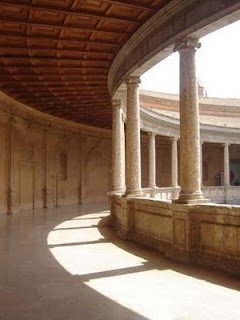A Short Journal
I love palaces- beautiful palaces; old sprawling traditional buildings; old monuments and castles; those that speak of the bygone days. They have an essence of ancience and antiquity in their walls, in the art and artistries in their buildings; in the architectures and tapestries that they are adorned with. They are a witness to a history. They make a mark on the sands of time. I feel as if I am a part of their surroundings. I feel a sense of belonging and strong affinity for these places. They awe me, mesmerize me, intrigue me, mystify and even soothe me. These ancient towers are an ambassador of dignity, elegance, beauty, loyalty, and tradition. They speak of a whole dynasty, its success, achievements and its failings; its influence on eternity; its principles and ideologies and its inevitable end.
Even old monasteries, forts, churches, tombs, and bungalows, attracts me, especially those long corridors and spacious courtyards. Dan Brown’s ‘The Da Vinci Code’ and ‘Angels and Demons’ gives a vivid picture of the tombs, churches, and chapels of Vatican city, London and Paris; besides the mystery and suspense thing. There’s a description of the towers, the pulpits, the intrinsic designs are architecture in the churches, etc.
In India, Rajasthan is the hub of such monuments and palaces. I want to visit Jodhpur, Jaipur, Ajmer, and many more places in Rajasthan. The customs and traditions of the rajputs, the Rajasthani cuisine, make this place unique in its own way. It tells the tales of wise, courageous and just kings; loyal and devoted queens; of princes, the ‘veer yodhas’ and beautiful princesses groomed with royal mannerisms and etiquettes.
Every speck of dust there, carries a flavor of Indianness; and every breeze blows with a sense of royalty.
Even old monasteries, forts, churches, tombs, and bungalows, attracts me, especially those long corridors and spacious courtyards. Dan Brown’s ‘The Da Vinci Code’ and ‘Angels and Demons’ gives a vivid picture of the tombs, churches, and chapels of Vatican city, London and Paris; besides the mystery and suspense thing. There’s a description of the towers, the pulpits, the intrinsic designs are architecture in the churches, etc.
In India, Rajasthan is the hub of such monuments and palaces. I want to visit Jodhpur, Jaipur, Ajmer, and many more places in Rajasthan. The customs and traditions of the rajputs, the Rajasthani cuisine, make this place unique in its own way. It tells the tales of wise, courageous and just kings; loyal and devoted queens; of princes, the ‘veer yodhas’ and beautiful princesses groomed with royal mannerisms and etiquettes.
Every speck of dust there, carries a flavor of Indianness; and every breeze blows with a sense of royalty.










Comments
Post a Comment